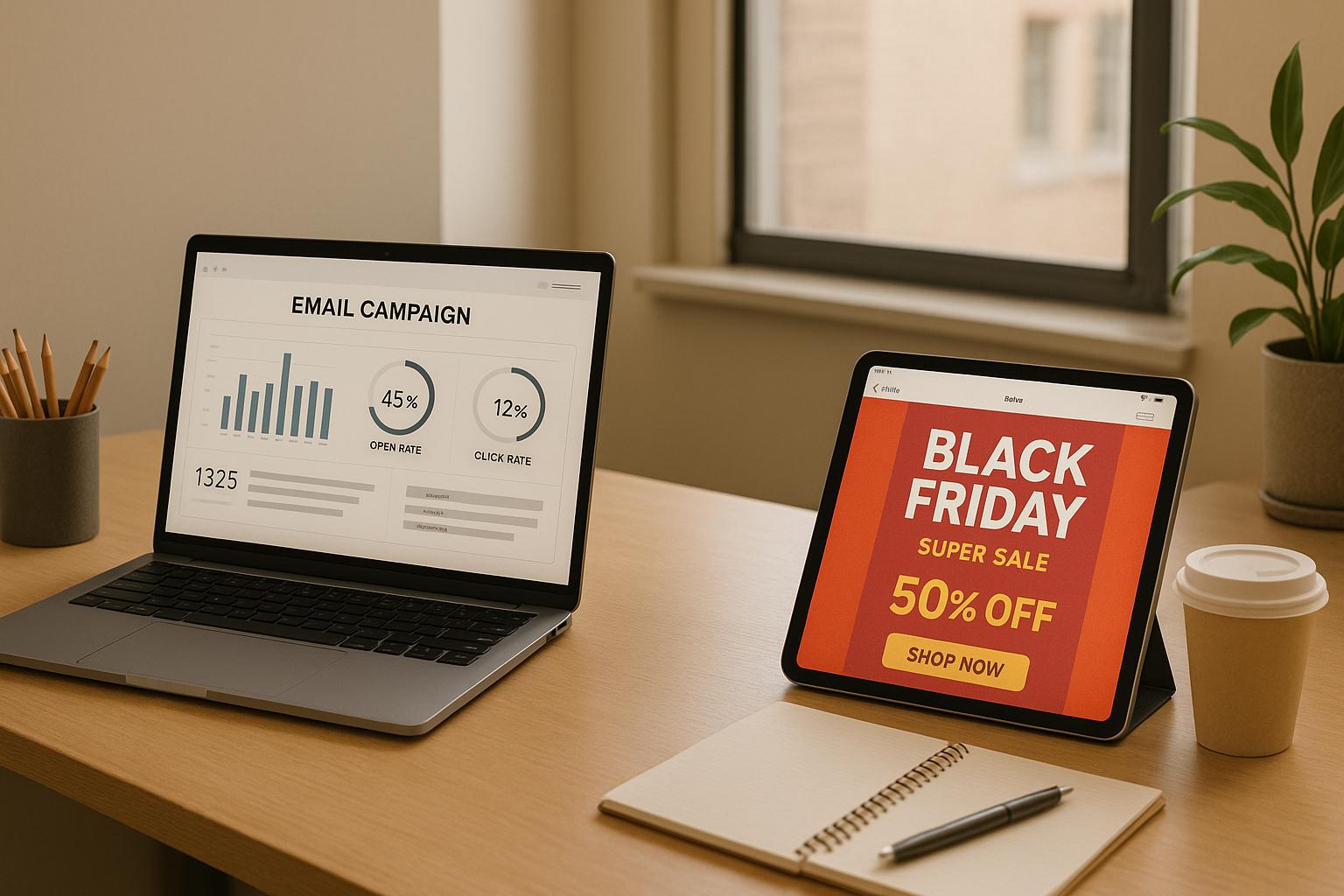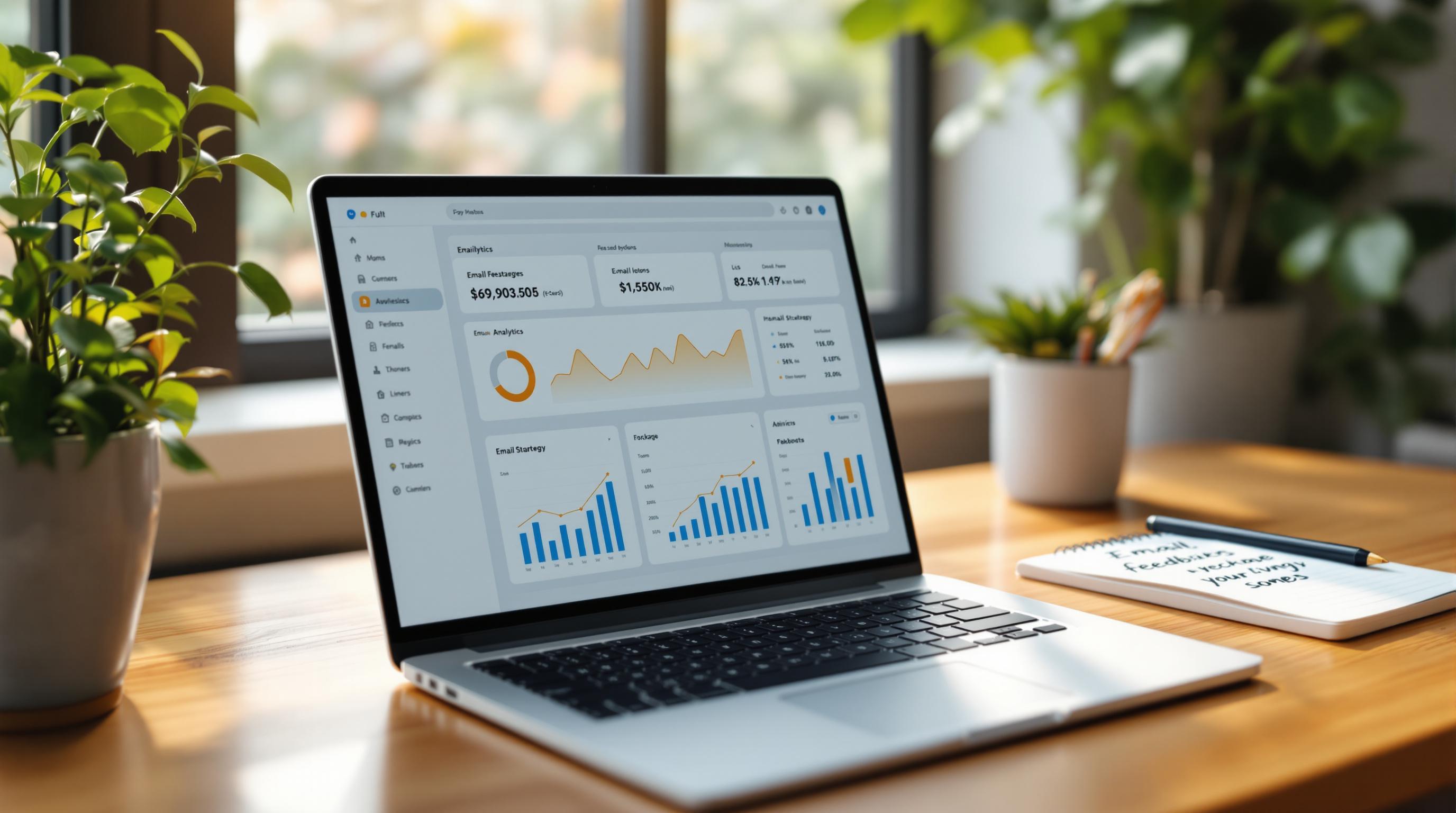Trigger emails are automated messages sent based on user actions like signing up, abandoning a cart, or becoming inactive. They perform much better than regular emails, with 2.2X higher open rates, 2.1X higher click rates, and 4.1X higher conversion rates. Here's why they work:
- Welcome Emails: Sent immediately after sign-up, these emails achieve 4X more opens and 5X more clicks.
- Cart Abandonment Emails: Recover lost sales with personalized reminders and incentives, boosting conversions by 70.5%.
- Reengagement Emails: Win back inactive users with tailored offers, increasing sales by 64%.
Why They Work:
- Personalization: Tailored to user behavior (e.g., past purchases or browsing).
- Timing: Sent at the right moment (e.g., within hours of cart abandonment).
- Mobile-Friendly: Optimized for easy reading on phones.
To get started, focus on timing, segmentation, and clear calls-to-action. Use tools with automation and analytics features, like HubSpot or Omnisend, to refine your campaigns and maximize results.
Types of Trigger Emails That Work Best
Welcome Emails
Welcome emails are key to building strong customer relationships and sparking early engagement. These automated messages boast 4X more opens and 5X more clicks than regular marketing emails [2]. Why? They hit inboxes when user interest is at its peak, delivering value right away.
An effective welcome email should:
- Confirm the sign-up and outline what to expect in future emails.
- Provide immediate value, like exclusive offers or helpful resources.
- Encourage users to take their first action, such as exploring your platform or completing a profile.
By setting clear expectations and offering value upfront, these emails help build trust, reduce churn, and encourage long-term engagement.
Cart Abandonment Emails
Cart abandonment emails are all about recovering sales that might otherwise be lost. These messages are designed to nudge users back toward completing their purchases with well-timed, persuasive content.
Key components include:
- Displaying the abandoned items alongside personalized product suggestions.
- Offering time-sensitive discounts or incentives to drive urgency.
- Simplifying the process with a one-click cart recovery option.
Reengagement Emails
Reengagement emails are a smart way to reconnect with inactive customers, potentially increasing sales by up to 64% [4]. These emails use personalized content and targeted offers to reignite interest.
Successful reengagement tactics include:
- Highlighting new features or tailored content based on past activity.
- Offering exclusive "win-back" deals to encourage a return.
- Using personalized offers and clear calls-to-action to draw users back in.
With these trigger email types in your toolkit, you're ready to explore how to craft them for maximum impact.
Create a Customer Journey Automation
Tips for Writing Effective Trigger Emails
Creating trigger emails that work requires a strong focus on personalization, timing, and mobile accessibility. These factors play a key role in boosting engagement and conversions.
Use Segmentation and Personalization
Start by dividing your audience into smaller groups based on their behaviors and preferences. Here are some common ways to segment:
- Purchase history: Tailor recommendations based on past buys.
- Browsing patterns: Highlight products similar to what users have viewed.
- Geographic location: Adjust content for regional relevance.
- Engagement level: Target active users differently than dormant ones.
- Sign-up source: Personalize content based on how they joined (e.g., social media, website).
For example, if someone browsed athletic wear, you could suggest sports-related products. Or, in a cart abandonment email, recommend items that complement what they left behind. Once your audience is segmented, timing becomes the next crucial step.
Focus on Timing and Frequency
When emails are sent can greatly influence their success. Studies show that well-timed trigger emails can achieve an impressive 75% open rate [4].
| Email Type | Timing & Considerations |
|---|---|
| Welcome | Send immediately to capture initial interest. |
| Cart Abandonment | Within 1-3 hours to act on purchase intent. |
| Re-engagement | After 30-60 days of inactivity to reconnect. |
To avoid overwhelming your audience, limit how often you send emails. Keep an eye on engagement metrics - if open rates drop, consider reducing your email frequency.
But timing isn’t everything. With most emails being opened on mobile devices, ensuring they look great on smaller screens is just as important.
Make Emails Mobile-Friendly
A mobile-friendly design is essential for the success of your trigger emails. Here’s how to optimize them:
- Use single-column layouts, clear fonts, and easy-to-tap buttons.
- Place important details at the top and keep subject lines concise.
- Include enough white space to make the email easy to read.
- Compress images to ensure faster loading times.
sbb-itb-6e7333f
Tools and Services to Improve Trigger Emails
Once you've created effective trigger emails, the right tools can make all the difference. These tools help streamline automation, simplify workflows, and provide insights to refine your campaigns.
Explore Email Marketing Tools with the Email Service Business Directory
The Email Service Business Directory is a great starting point for finding platforms tailored to trigger email campaigns. It evaluates tools based on features that support key campaign goals, such as:
| Feature Category | What It Includes |
|---|---|
| Automation & Triggers | Tools for tracking behavior, building workflows, and scheduling campaigns |
| Analytics & Testing | Insights through A/B testing, performance tracking, and conversion metrics |
| Integration & Performance | Seamless CRM connections and tools to improve email deliverability |
Leverage Automation and Analytics Features
When choosing a platform, focus on these must-have automation features:
- Behavioral triggers: Automatically engage users based on their actions.
- Dynamic personalization: Tailor email content using real-time user data.
- Real-time analytics: Track performance and make adjustments on the fly.
- Smart segmentation: Group audiences effectively for better targeting.
Compare Email Marketing Platforms
To find the best fit, evaluate platforms based on these criteria:
- Workflow features: Look for advanced tracking and response systems.
- Analytics tools: Opt for platforms with instant performance insights.
- Integration options: Ensure compatibility with your existing tools.
- Support: Choose platforms that offer resources and expertise for trigger email campaigns.
Platforms like HubSpot and Omnisend stand out in this space, offering robust automation workflows and detailed analytics to help fine-tune your campaigns [3].
Conclusion: Using Trigger Emails to Increase Conversions
Trigger emails have the power to elevate your email marketing by delivering timely and personalized messages that resonate with your audience. These automated emails are a smart way to drive results and are a must-have in any marketer's toolkit.
Key Points to Keep in Mind
To make the most of trigger emails, focus on these three essentials:
- Timing: Send emails promptly based on user actions.
- Personalization: Customize content to make it relevant.
- Segmentation: Target specific groups for better impact.
For example, welcome emails are a standout performer in trigger-based campaigns, boasting 4X more opens and 5X more clicks compared to standard campaigns [2]. That’s proof of how automation can supercharge engagement and conversions.
How to Get Started
Start by reviewing your current email performance. Identify key triggers, such as welcome emails or cart abandonment reminders, and use analytics to fine-tune your approach. When you combine precise timing, tailored content, and advanced tools, you’ll see the true potential of trigger emails.
Looking for the right tools? The Email Service Business Directory is a great resource for finding platforms that offer advanced automation and analytics to help you optimize your campaigns and boost conversions.
FAQs
What are trigger emails, and how do they perform?
Trigger emails are automated messages sent in response to specific user actions. Data from Mailchimp shows these emails generate 70.5% higher conversion rates compared to standard email campaigns [1]. They also see better open, click, and conversion rates, making them a powerful tool for boosting engagement and sales.
What makes trigger emails so effective?
The key is timing and relevance. These emails align with user intent during pivotal moments. For instance, Shopify improved sales and customer retention using trigger emails like cart recovery and order confirmations [1]. By delivering tailored content right when users are most likely to act, they produce strong results.
How can I optimize my trigger emails?
Here are some tips to improve your trigger emails:
- Timing: Send emails immediately after the triggering action.
- Mobile optimization: Make sure your emails look great on all devices.
- Clear CTAs: Stick to one clear call-to-action per email.
- Personalization: Use subscriber data to tailor your content.
Using automation tools with advanced analytics can help you monitor performance and refine your campaigns. Platforms listed in the Email Service Business Directory are a good starting point to find these tools. By focusing on these strategies, businesses can maximize the impact of their trigger emails.


